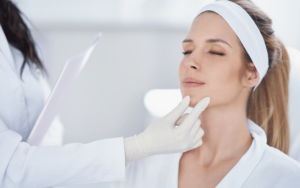Botox , a trademark for botulinum toxin type A. Over the past few years, treatments based on it have revolutionized the aesthetic and medical industry in recent decades . Although it was originally used to treat medical conditions such as muscle spasms and neurological disorders, its popularity has increased significantly due to its applications in the field of beauty and facial rejuvenation.
However, it is essential to understand its uses, benefits, and considerations before considering any Botox procedure. Here we tell you everything you need to know about it.
Medical and aesthetic uses: Beyond facial aesthetics
Botox has been used in a variety of medical applications, such as treating muscle spasms, chronic migraines, strabismus, and more. On the cosmetic front, it has become a popular option to temporarily reduce facial lines and wrinkles, such as crow’s feet and forehead wrinkles. It can also be used to treat conditions such as bruxism and excessive sweating.
How Botox Works: Temporary Blocking of Muscle Signals
Botox works by temporarily blocking the nerve signals that cause muscle contraction. By injecting small amounts of botulinum toxin into targeted muscles, controlled relaxation is achieved that smooths facial lines and wrinkles.
It is important to note that, contrary to general belief, in this case we are dealing with a type of treatment whose permanence in our body is temporary. Generally, it lasts several months, which means that the treatment must be repeated to maintain the results.
Aesthetic and emotional benefits: Facial rejuvenation and increased confidence
One of the most notable benefits of Botox is its ability to achieve non-surgical facial rejuvenation . By smoothing out lines and wrinkles, Botox can provide a fresher, more youthful appearance. Additionally, the results can have a positive emotional impact by increasing confidence in appearance and improving self-esteem.
 Important Considerations: Medical Consultation and Possible Side Effects
Important Considerations: Medical Consultation and Possible Side Effects
Before undergoing any Botox procedure, it is essential to have a thorough medical consultation. A qualified medical professional will evaluate your medical history, discuss your expectations, and determine if you are a suitable candidate for treatment.
Although Botox is generally safe, there are possible side effects, such as bruising, temporary swelling, muscle weakness, or allergic reactions.
Results and maintenance: Duration and frequency of treatments
Botox results are not permanent and generally last three to six months. To maintain the effects, it is recommended to schedule follow-up treatments. The frequency may vary depending on the person and the area treated. It is important to follow your healthcare professional’s guidelines to get the best results and minimize risks.
Botox administration should be performed by qualified medical professionals, such as doctors or nurse practitioners with a background in aesthetics. Choosing the right professional ensures that safe protocols are followed and natural results are achieved. Ethics and transparency in communication are essential to fully understand the procedure and its possible results.

